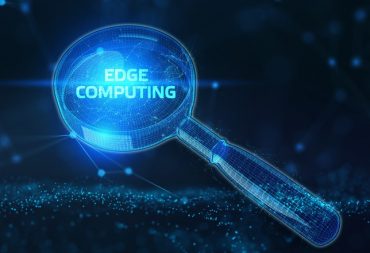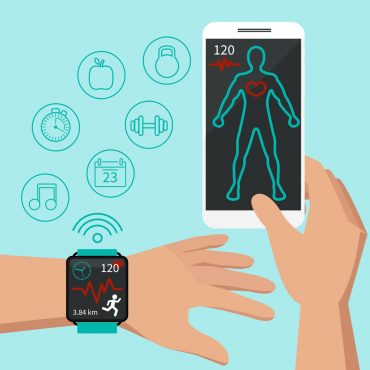
The success of IoT depends on the effective deployment of a wide range of technologies, including real-time edge, cloud data infrastructure, and AI/ML analytics tools.
This is a great time to reflect on how this past year’s IoT growth will inform the next. As a whole, IoT is expected to continue to see explosive global growth, and there are a few trends and areas to watch that could continue to evolve exponentially. Although smart manufacturing, Industrial Internet of Things (IIoT), and connected vehicles often take the limelight, sectors such as utilities and oil and gas are heading for prime time, too, as well as healthcare.
The “It” Factor for the Future: Scale
Real-time, at-scale data is going to be the primary focus for IoT data processing going forward. According to IDC, by 2025, 30% of all data (175 ZB globally) will be in real time, with much of that data coming from IoT sensors. No matter the sector or use case, there has been a shift toward support for real-time data processing at scale. The huge potential and proliferation of IoT sensors drive this growth. Leveraging IoT is seen as a way to create infrastructure that’s powerful, efficient, and more resilient. More companies and industries are realizing the power of harnessing and applying real-time data to day-to-day business functions. As IoT sensors and endpoints continue to increase with more sophisticated use cases, we’ll hopefully see platforms managing that data scale at a commensurate level. The most coveted attributes will be support for massive scale and high performance. Future-proofing is also a hot topic for scaling.
See also: Manufacturing Ahead of the Curve via AI, 5G, and Edge
XDR Brings the Bells and Whistles
Another key requirement in emerging Internet of Things ecosystems is the ability to move the data anytime from anywhere with minimal to no intervention. Enter Cross Datacenter Replication (XDR), which can play a crucial role in mission-critical IoT data management. XDR allows for flexibility in filtering to determine which data attributes flow in which direction. Strong filtering capabilities should result in data volume reduction in transit, contributing to a network cost reduction. There’s also a need for speed. A replication feature needs to work quickly so that it does not act as a bottleneck for data processing. Finally, IoT needs to maintain data integrity.
XDR-like features can eliminate the dependency between sensor data collection points (e.g., at the tactical edge closer to the end devices) and data analysis points, which can be either edge (the same as the collection point) or the core – an aggregation point of data coming from different edge sites.
Any mission-critical IoT use case requires all of its moving assets to constantly be a part of the Right Now Economy – from data collection to aggregation to insight generation to triggering action – making everything happen in real time. To realize that vision, data transactions (both ingestions and queries) need to happen in the sub- to low-millisecond range. XDR-like features are key enablers for that vision.
Sector to Watch: Utilities
The utilities sector is expected to experience strong growth, but it’s in desperate need of modernization with legacy infrastructure still in place. That heightened need could be a trigger for the widespread adoption of Internet of Things technology. MarketsandMarkets reports that IoT utility market spending is expected to grow to $53.8 billion by 2024, compared to $28.6 billion in 2019. Directing some of that spending toward infrastructure modernization would help immensely. Addressing utility outages requires immediate feedback and action, so Utilities could greatly benefit from the real-time data that IoT sensors can provide.
Utility Operators, for example, can detect any changes in usage levels in real time, which can immediately help identify power losses and gas leaks. Scenarios like these, where leaving metrics unchecked for too long, can result in catastrophe not just for homes but for hospitals, nursing homes, and airports. Additionally, IoT sensors can identify overloading much sooner. Quicker reactions enabled by early warning and phased restoration systems can save lives by ensuring power is delivered to the most critical priorities first. We also expect to see more collaboration between vendors and U.S. utility companies to help with the data infrastructure modernization process. Data capturing and processing, demand forecasting, predictive maintenance via AI, data retention, and restoration all suddenly become interconnected, relying on each other for the most comprehensive model. From a seasonal perspective, utility failures aren’t just a concern during the hot months of oppressive heat. Winter storms can catastrophically wipe out power, leaving casualties in their wake. As we approach winter in the U.S., we’ll see preparations for the electrical impact of snow and ice storms.
Sector to Watch: Oil & Gas
Another field that’s expected to significantly grow Internet of Things adoption is Oil & Gas. In fact, it has already embraced IoT, having seen a proliferation of Internet of Things sensors. The industry has been using them for collecting any and all relevant data points, such as oil depth and reserve amount or well condition, through different connectivity solutions, including satellites, narrow-band IoT, and LoRA, plus processing the data on-prem or in the cloud. The key challenge is lowering the latency of those processes for real-time decision making. Enabling connectivity solutions is one piece of the puzzle but ensuring that the lag between point A and point B is virtually nonexistent is the crux of IoT. Until that low latency is achieved, we expect that IoT innovation will continue to forge ahead.
Sector to Watch: Healthcare
Last but not least: healthcare. We already know the significance of connectivity for healthcare from the use cases increasing in ubiquity during the pandemic. Aside from the skyrocketing of accessible telemedicine, there has been a rapid introduction of previously unheard-of use cases. Take remote monitoring, for example. Sensors worn or inserted can remotely send a signal with metrics to a monitor, and those vitals can be read from anywhere. People with severe health conditions can benefit from these innovative techniques by always having a constant watch on their condition. Likewise, it can also help those with varying conditions of severity, helping them to live their lives without needing to be on-site at a medical facility.
The success of IoT depends on the effective deployment of a wide range of technologies across the ecosystem. This includes smarter Internet of Things sensors and end devices: real-time edge, core, cloud data infrastructure, and AI/ML capabilities of analytical tools. IoT isn’t even close to realizing its potential yet. There are millions of use cases yet to be found and many industries yet to be discovered. We look forward to what today’s businesses achieve in the next year and the dent that they’ve put in the millions of future use cases.




























